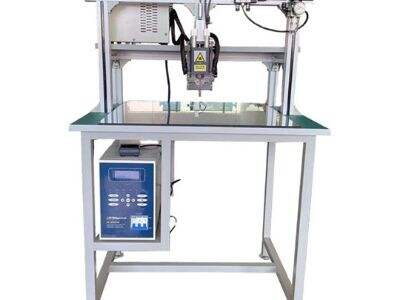What is Pressure Testing?
A good and strong seal is very needed when we are making small electronic devices. A good seal aids the device in functionality and protects it from the outside world. Pressure testing is one way to see if the seal is good. We take the sealed device and seal it in a chamber as part of this test. We slowly boost pressure inside that chamber to see if any air escapes. Even the smallest rupture in this seal can lead to the device ceasing to function properly. This IC pack wire bonder test is critical for quality control, and even a small leak can result in leaks down the road.
Why Pressure Testing is Significant?
A lot of delicate temp and pressure control is required for small electronic devices. Pressure testing is very significant because it Battery welder helps to confirm the devices made properly and will work reliably for a prolonged period of time. Loosely connected: We do not test them properly and they may fail at the time of using it, and that creates a lot of problems for the manufacturers and users of these devices. That could translate into unhappy customers and expensive repairs when devices break. Hence, based on variety, testing an important phase of high-quality products creation process.
Testing: How Does It Help Devices?
Part of a wider testing process, pressure testing is one of many ways in which devices can be improved and last longer. One of the other important tests that we do is helium leak testing. In this test, we place the sealed device in a chamber again, except this time we pump helium gas into the chamber. Helium is a very light gas and can slip out through small holes that other gas cannot, which is why these Die bonder holes need to be made as small as possible. When any helium leaks out, it is tested using a special detector. This test is useful for detecting those small leaks you would not see with other tests. “We [can] ensure that the seal is indeed effective by using helium gas.
Using Both Tests Together
Pressure testing and helium leak testing together form a robust and reliable combination to determine if devices pass their sealing requirements. Pressure testing demonstrates whether the seal will hold under varying pressure (whether it can survive shifts in its surroundings). Simultaneously, helium leak testing detects even the smallest leaks which cause the potential for future trouble. Performing both tests in conjunction gives manufacturers the confidence that their devices are high quality and high reliability. Such a rigorous testing procedure avoids potential problems after the devices have been sold, which is crucial for customer happiness.

 EN
EN
 AR
AR
 BG
BG
 CS
CS
 DA
DA
 NL
NL
 FI
FI
 FR
FR
 DE
DE
 EL
EL
 IT
IT
 KO
KO
 NO
NO
 PL
PL
 PT
PT
 RO
RO
 RU
RU
 ES
ES
 SV
SV
 TL
TL
 IW
IW
 ID
ID
 LT
LT
 SR
SR
 SL
SL
 UK
UK
 VI
VI
 ET
ET
 HU
HU
 TH
TH
 TR
TR
 FA
FA
 AF
AF
 MS
MS
 GA
GA
 IS
IS
 HY
HY
 AZ
AZ
 KA
KA
/images/share.png)






